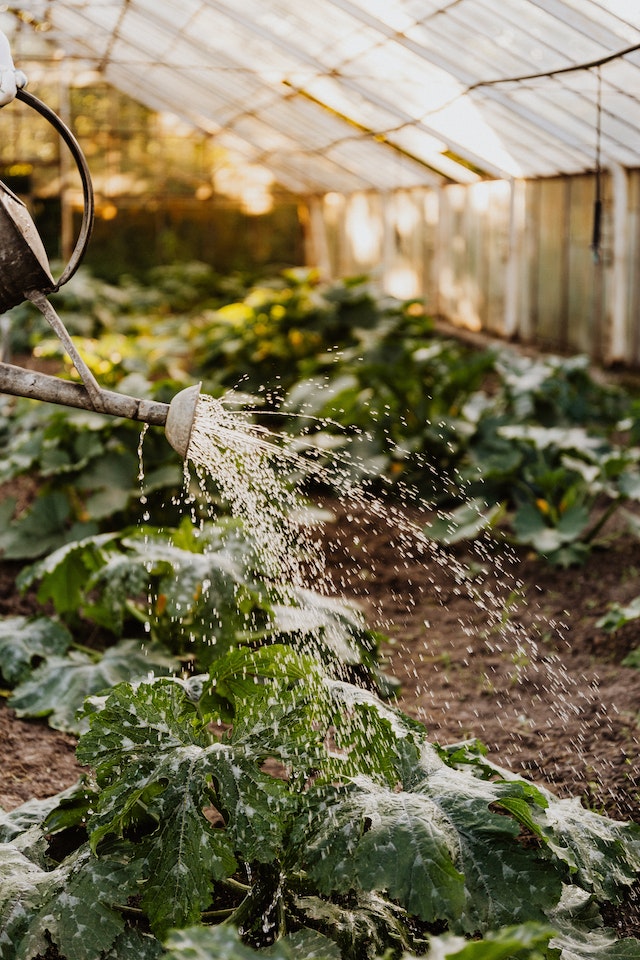By Charmaine Peters
Like all living things, plants need water to survive. In fact, between 80 and 95 percent of a plant’s composition is made up of water, and nearly 9 billion gallons of water are used daily to water gardens and lawns. The amount of water your garden gets can have a major impact on its growth, resistance to pests, and even the plants’ nutrients.
Since water is vital for plants to thrive, how you’re watering your garden is critical. If the plants in your garden aren’t growing right or are dying, you may be watering them wrong. Here are five mistakes you may be making and how you can fix them to grow a healthy garden!

1. Watering All Your Plants the Same
Every plant is going to need something different to help it grow. This goes for watering too. Assuming that your plants need the same amount and frequency of watering is one of the most common mistakes you can make (and a pretty easy one to fix). While you may be watering one plant in your garden just right, you may be drowning the one next to it.
Don’t rely on a phone notification to go on a watering spree for your garden. Before you start planting for the season, learn what each plant in your garden needs so you can keep it growing all season long!
2. Not Watering Enough
It’s often said that keeping up with a garden is like taking care of children. They both need consistent care and attention to help them grow strong and healthy. Fortunately, plants will tell you when their needs aren’t being met, especially when it comes to watering. Wilting, discolored, or falling leaves are a good indicator that your garden needs more water, but just to be sure, check your topsoil. If it’s dry, your plant is probably dehydrated!
As the temperatures rise in South Florida, it’s important to keep an eye on your plants to make sure they are getting enough water to grow. If you notice your plants are starting to die of dehydration, try to move it out of direct sunlight. If you have a potted plant, submerge the plant in water for about 30 minutes and then drain. Then, consider setting a reminder for yourself to check the topsoil of your plants more often.
3. Watering Your Plants Too Much
Contrary to what most people think, you can over-water your plants, and it can ruin them just as quickly as not watering them enough. Overwatering can limit or cut off oxygen supply that roots depend on to grow properly. Too much water can also lead to root rot and attract other diseases and pests to your garden.
So how can you tell if you have overwatered your plant? You may see yellowing or loss of leaves, but those can also be signs of a lack of water. One of the best ways to tell in the moment is to feel the topsoil. If your plants are looking overwatered, let the soil dry out and check the drainage holes in your pots to make sure the roots are only getting what they need. You can also take time to repot your plant with new soil.
4. Watering from Overhead
When watering your garden, your first thought was probably to invest in a watering can or to shower your garden from afar with a hose. However, watering from overhead is more wasteful and puts your plants at higher risk for contracting diseases. Instead, there is a healthier and more sustainable way to water, and that means getting up close and personal with your garden. To effectively water your plants, make sure you start at the base and shower the soil around your garden rather than the leaves of your plant!
5. Not Using Containers with Drainage Holes
When you shop for pots to house your plants, check the bottom for drainage holes – not every pot has them. Without them, water is trapped, leaving your plants at a higher risk for overwatering. If you have a pot without drainage holes, you can carefully use a drill to make them yourself. If you have a pot with a saucer underneath (usually used to keep water off of your counter), remove it. The saucer prevents proper drainage and can lead to overwatering and root rotting.
Water is one of the most basic necessities for any plant so it’s important to do it right. Whether you’re a first-time planter or a seasoned gardener, now is the time to fix those watering mistakes so you can watch your garden thrive!

